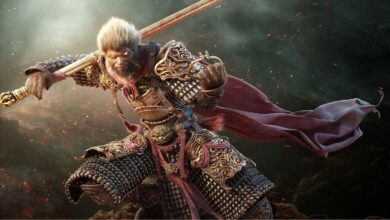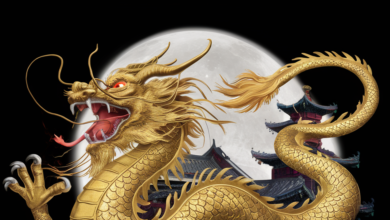
Table of Contents
Xiangxi, a region in the western part of Hunan province, China, is renowned not only for its scenic beauty but also for its rich and enigmatic folklore. Among the many legends that have emerged from this area, two stand out as particularly intriguing and mysterious: the art of «Driving Corpses» (赶尸) and the phenomenon of «Falling Flowers Cave Maidens» (落花洞女). These practices, known collectively as part of the «Three Mysteries of Xiangxi» (湘西三邪), offer a fascinating glimpse into the region’s unique cultural heritage. This article delves into these two enigmatic traditions, exploring their origins, practices, and the enduring intrigue they hold.

Driving Corpses (赶尸)
Origins and Practices
The practice of driving corpses, also known as «Corpse Walking» or «Spirit Relocation,» involves transporting the bodies of deceased individuals back to their hometowns for burial. According to legend, skilled practitioners, known as «Corpse Drivers,» use secret techniques to animate the corpses, enabling them to walk home in single file, guided by the Corpse Driver.
The origins of this practice are shrouded in myth. One popular story attributes the tradition to the ancient military leader Chiyou, who, after a fierce battle, supposedly used magical incantations to animate the bodies of fallen soldiers, allowing them to return home. Another theory suggests that the practice emerged during the Qing Dynasty, when the need to transport bodies over long distances in treacherous terrain necessitated a more efficient method than traditional means.
The precise mechanisms by which corpses were supposedly animated remain a topic of speculation. Some suggest that ancient herbal concoctions, combined with ritualistic chanting, played a role. Others believe that the practice may have involved the use of special techniques for preserving the bodies and manipulating their limbs to create the illusion of movement. Whatever the case, the practice of driving corpses has left an indelible mark on the folklore of Xiangxi.
Procedure
The process of driving corpses involves several steps and rituals. Before the journey begins, the bodies are prepared by placing cinnabar and talismans on specific points of the body to prevent decay and ensure the souls remain attached. The Corpse Driver, dressed in traditional Daoist robes, leads the procession at night, using a small bell to keep the corpses in line and to warn villagers of their approach. The journey is typically undertaken at night to avoid detection and to respect the spirits.
The journey of the corpses is often described as eerie and otherworldly. The Corpse Driver walks in front, holding a lantern and ringing a small bell. The corpses, dressed in their burial clothes, follow behind, moving in a stiff, jerky manner. The procession travels in silence, avoiding contact with the living. Villagers are said to close their doors and windows tightly when they hear the bell, out of respect and fear.
The destination of the journey is typically the hometown of the deceased. Upon arrival, the corpses are properly buried according to local customs. The Corpse Driver is usually rewarded with food, money, and other gifts for his services. The successful completion of the journey is seen as a fulfillment of filial piety, ensuring that the deceased can rest in peace in their ancestral land.
Restrictions on Driving Corpses
Not all deaths are suitable for the practice of driving corpses. There are specific restrictions and conditions under which a corpse can be driven. These restrictions are rooted in traditional beliefs and cultural norms that seek to maintain the sanctity and order of the practice.
- Natural Deaths: The deceased must have died of natural causes. Deaths resulting from violence, accidents, or suicide are generally not eligible for corpse driving. It is believed that unnatural deaths disturb the spirit and could lead to malevolent hauntings or misfortune during the journey.
- Timely Deaths: The practice is typically reserved for individuals who died at an appropriate age, reflecting a natural progression of life. Premature deaths, particularly those of children, are usually not subjected to corpse driving, as their spirits are considered unsettled and vulnerable.
- Proper Rituals: The deceased must have undergone proper funerary rituals before being driven. This includes cleansing the body, performing rites to guide the spirit, and placing protective talismans to ensure the spirit remains attached to the body during the journey.
- Family Consent: The family of the deceased must consent to the practice. This consent is often formalized through rituals and offerings, seeking the approval of ancestors and local deities to ensure a smooth and respectful journey.
- Cultural Context: The practice of driving corpses is deeply embedded in local customs and traditions. It is generally not performed for outsiders or individuals from different cultural backgrounds. The practice is a reflection of community identity and cohesion, emphasizing the importance of maintaining cultural continuity.
Mystery Inns
During these eerie journeys, corpse drivers and their animated charges would sometimes rest at special inns known as «Corpse Inns» (死尸客店). These mysterious establishments catered exclusively to corpse drivers and their corpses, remaining open year-round. The doors of these inns were always open, as the area behind the front door was designated as a resting place for the corpses. Ordinary people generally did not stay at these inns, and their existence added another layer of mystery to the already enigmatic practice.
Training and Selection of Corpse Drivers
The art of driving corpses is not one that can be learned easily. Aspiring corpse drivers undergo a rigorous selection and training process, and not everyone is deemed suitable for the task.
Selection Criteria
- Age and Physical Attributes: Candidates must be at least 16 years old and taller than 1.7 meters. Additionally, they are required to have a somewhat unattractive appearance, believed to ward off evil spirits and discourage superstitions.
- Orientation Test: Aspiring corpse drivers must demonstrate an impeccable sense of direction. During the selection process, they are made to stare at the sun and then spin around rapidly. If they can immediately and accurately determine the cardinal directions afterward, they pass the first test.
- Strength and Endurance: The job requires physical strength and endurance. Candidates must be able to carry and maneuver heavy loads, such as carrying a corpse over steep inclines. This involves lifting and transporting the body up difficult terrain when necessary.
- Courage Test: Another crucial test involves a candidate retrieving a tung leaf placed on a grave in a remote mountain area during the night. This test of bravery and composure in the dark is essential to prove their suitability for the role.
Training
Once selected, apprentices undergo extensive training under the guidance of experienced corpse drivers. The first skill they learn is to draw protective talismans. These talismans, written on yellow paper with red ink, resemble a combination of symbols and characters and are used to ensure safe passage and ward off malevolent spirits. In case of unforeseen events, these talismans can be placed on trees or doors, or even burned and consumed with water.
In addition to mastering talismanic art, apprentices must learn thirty-six essential skills required for driving corpses. These include:
- Standing Skill: Teaching the corpse to stand upright.
- Walking Skill: Ensuring the corpse can walk smoothly.
- Turning Skill: Guiding the corpse to make turns.
- Downhill Skill: Safely leading the corpse down slopes.
- Bridge Crossing Skill: Helping the corpse cross bridges.
- Silent Dog Skill: Ensuring dogs do not bark and disturb the journey.
- Revival Skill: Techniques to reinvigorate a corpse if it starts to falter.
Cultural Impact
Despite the lack of scientific evidence supporting the existence of this practice, the legend of driving corpses has persisted, influencing Chinese horror films and literature. It reflects the deep-seated cultural beliefs surrounding death, the afterlife, and the importance of returning home for a proper burial.
The legend of driving corpses has become a staple of Chinese horror fiction. Films, television shows, and novels often depict the eerie processions of animated corpses, adding elements of suspense and supernatural intrigue. The practice has also been referenced in academic discussions of Chinese funerary customs and beliefs about the afterlife.
Moreover, the legend has contributed to the mystique of Xiangxi as a region steeped in mystery and the supernatural. Tourists and folklore enthusiasts are drawn to the area, seeking to learn more about its unique cultural heritage. The practice of driving corpses serves as a reminder of the rich tapestry of beliefs and traditions that make up Chinese folklore.
Driving Corpses in Modern Times
In modern times, the practice of driving corpses is largely regarded as a piece of folklore rather than a real phenomenon. However, it continues to hold a significant place in the cultural imagination of Xiangxi and beyond. Efforts to document and preserve the legends associated with driving corpses are part of broader initiatives to maintain cultural heritage and educate new generations about traditional practices.
Cultural festivals and events in Xiangxi sometimes feature reenactments or storytelling sessions about driving corpses. These activities serve to keep the legend alive and provide a platform for sharing local history and traditions. Additionally, museums and cultural centers in the region often include exhibits on the practice, providing context and insight into its origins and significance.
The Role of Daoism and Spiritual Beliefs
Daoism plays a central role in the practice of driving corpses. The rituals and techniques used by Corpse Drivers are deeply rooted in Daoist beliefs about the afterlife, spirits, and the natural world. Daoist priests and practitioners are often involved in the preparation and execution of the journey, ensuring that the appropriate rites and ceremonies are performed.
According to Daoist belief, the spirit of the deceased must be properly guided to avoid becoming a wandering or malevolent ghost. The rituals associated with driving corpses are designed to ensure that the spirit remains attached to the body and can be safely transported to its final resting place. This involves the use of talismans, incantations, and other spiritual tools to protect the body and guide the spirit.
Local Stories and Anecdotes
Local stories and anecdotes about driving corpses abound in Xiangxi, adding to the richness and complexity of the legend. Elders in the region often recount tales of mysterious nighttime processions, eerie encounters with Corpse Drivers, and the strange phenomena associated with the practice. These stories serve to reinforce the cultural significance of the legend and keep it alive in the collective memory of the community.
One popular story tells of a Corpse Driver who encountered a group of bandits while leading a procession of corpses through a remote mountain pass. The bandits, initially intending to rob the procession, were frightened away by the sight of the animated corpses and the Corpse Driver’s incantations. The story highlights the protective and supernatural aspects of the practice, emphasizing the power and mystery of the Corpse Driver.
Another tale involves a young boy who, out of curiosity, followed a Corpse Driver and his procession one night. According to the story, the boy witnessed the corpses moving in perfect unison, guided by the rhythm of the Corpse Driver’s bell. When the boy’s presence was discovered, the Corpse Driver warned him never to speak of what he had seen, lest he incur the wrath of the spirits.
Challenges and Controversies
The practice of driving corpses has not been without its controversies and challenges. Skeptics and critics have questioned the veracity of the legends, pointing to the lack of concrete evidence and the possibility of exaggeration or fabrication. Additionally, the practice has sometimes been portrayed in a negative light, with accusations of charlatanism and exploitation leveled against supposed practitioners.
Efforts to debunk the legend have included investigations and studies by historians, anthropologists, and folklorists. These efforts have sought to separate fact from fiction and to understand the cultural and social factors that have contributed to the persistence of the legend. While definitive proof of the practice remains elusive, the cultural and symbolic significance of driving corpses continues to be acknowledged and respected.
Maidens of the Blossom-Laden Cave
Legend and Rituals
The second mystery of Xiangxi involves the phenomenon of the «Maidens of the Blossom-Laden Cave.» According to legend, certain young women in the Xiangxi region possess the ability to cause flowers to fall from trees by simply walking beneath them. These maidens are also believed to undergo a strange ritualistic ordeal, where they enter caves and fast for several days, emerging either transformed or deceased.
The origins of this legend are unclear, but it is thought to be tied to local beliefs about purity, sacrifice, and nature. The ritualistic fasting and seclusion in caves may be seen as a form of spiritual purification or a test of the maidens’ connection to the natural world. The falling flowers symbolize the beauty and fragility of life, as well as the transformative power of nature.
The Role of Maidens in the Community
The maidens involved in this practice are often young, unmarried women. Their participation in the ritual is seen as both an honor and a sacrifice. The community views these maidens with a mixture of reverence and apprehension, recognizing their special status while also fearing the potential dangers associated with the ritual.
Cave Rituals and Transformations
The cave rituals involve the maidens entering designated caves and undergoing a period of fasting and meditation. During this time, they are believed to undergo a spiritual transformation, gaining new insights or powers. The exact nature of these transformations is not well-documented, but they are often described in terms of increased spiritual awareness or enhanced abilities.
In some cases, the maidens do not survive the ordeal. Those who do are celebrated as having undergone a profound spiritual journey, emerging with a deeper connection to the natural and spiritual worlds. The caves themselves are considered sacred spaces, imbued with the energy and presence of the maidens who have undergone the rituals.
Cultural Significance
The legend of the Falling Flowers Cave Maidens is a reflection of the deep spiritual and cultural values of the Xiangxi region. It highlights themes of purity, sacrifice, and transformation, emphasizing the connection between the human and natural worlds. The maidens’ rituals serve as a powerful symbol of the community’s respect for nature and the spiritual realm.
Modern Interpretations
In contemporary times, the legend of the Falling Flowers Cave Maidens continues to captivate the imagination. It has been depicted in various forms of media, including films, television shows, and literature. These modern interpretations often explore the mystical and mysterious aspects of the legend, bringing the story to new audiences and ensuring its continued relevance in popular culture.
Gu posion
The third and last mystery of Xiangxi is about the gu poison…

Click here for read the article about Gu poison!


